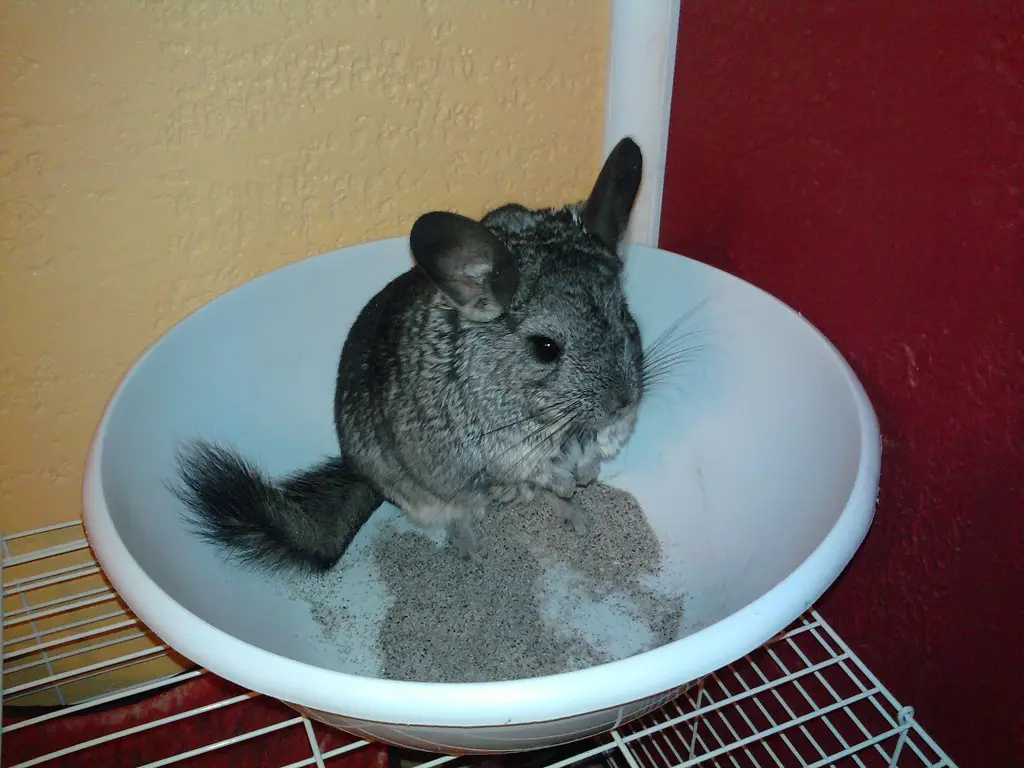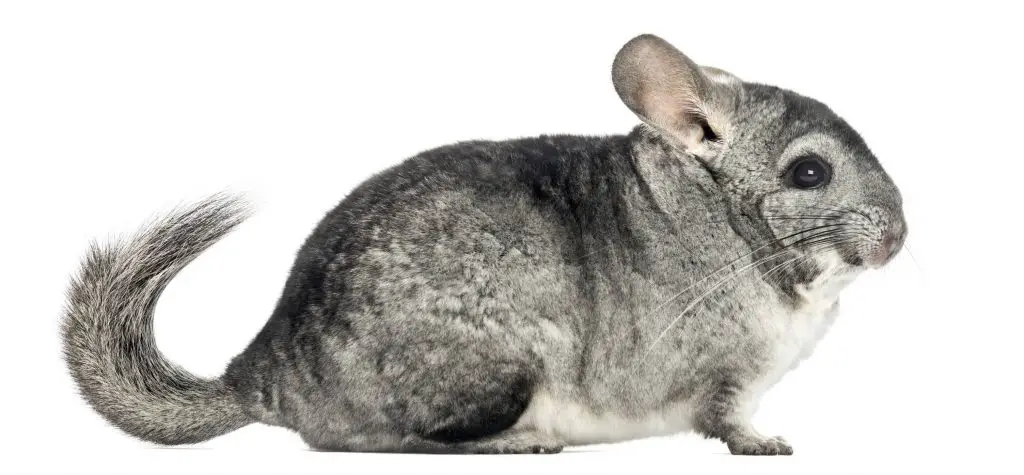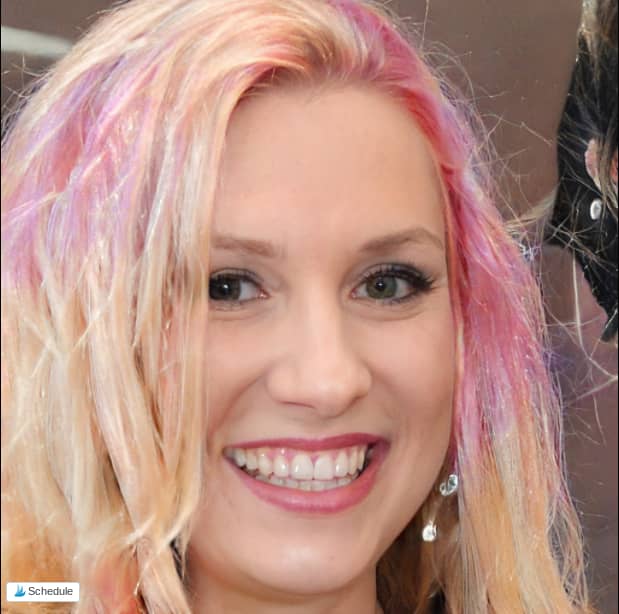Chinchillas have a thick, lush coat that was specially adapted for their natural habitat in the Andes Mountains of South America. This luxurious coat is soft and fluffy and you need to help keep it lean.
For that, chinchillas need to take baths, specifically dust baths. In this article, you will learn everything you need to know about chinchilla dust baths. (Check out the best dust baths for your precious little chin!)
Why do chinchillas need dust baths?

Now, if you own a chinchilla pet, you must have heard that they need dust baths. This will come off as a surprise to all animal owners, especially first-time chin-owners. Like, that’s weird. Why would anyone bathe with dust and make themselves dirtier? Doesn’t “taking a bath” mean cleaning yourself with water? But all pet stores are telling you the same. So why do chinchillas bathe in the dust?
Actually, the meaning of bath is a bit different for our little furry friends. For them, taking a bath means keeping themselves clean by rolling in the dust. Not just any dust, either. It needs to be high-quality, and natural dusting powder made especially for chinchillas. This chinchilla dust keeps their fur both healthy and clean. But why dust and not water?
Dense hair
Chinchillas are soft and fluffy animals with unique coats. This unique coat’s softness comes from the huge amount of hair follicles present in them. These fine hair follicles can have up to 80 hairs per follicle. That’s a lot! You can imagine how densely packed these hair strands are. This is why if you make them bathe with water, it will take forever to dry up. This isn’t a concern because their dense coat isn’t meant to get wet.
They used to be wild!
Though chinchillas have been domesticated for many years now, they used to be wild animals once. And even back then, they never used water to keep their coats clean. Those natural instincts are still present in them even after all these generations. It’s their natural behavior, and they need to do it in natural habitat (or at least, a habitat that feels natural). So if you want to keep your chinchilla happy and ensure their physical wellbeing, you have to make them feel at home. And the best way to do that is by giving them dust baths.
Oil & moisture issues
But that’s not the only reason they need dust baths. Chinchilla furs have a huge amount of oil and moisture. Now, what do you do when your terrace accumulates lots of rainwater? You sprinkle sand all over the place. While this gives you more reason not to use water on them, it also means that taking a dust bath helps them eliminate these extra oils. By playing around in the dust, they will remove any unwanted dust and additional oil from their coats.
Mental stimulation
Dust baths provide a great source of mental and physical stimulation for them and are also a great way for owners to fortify their animal-human bond.
What happens if they don’t take dust baths?
So you could be one of those pesky pet owners who think that dust baths are too much of a hassle or don’t trust it. Or maybe you have run out of bath dust and are wondering how much you can delay buying them. Then just know that if chinchillas don’t take dust baths, it wouldn’t be good for them.
Scheduling: required frequency
Chinchillas need dust baths at least once or twice a week; twice is the best.
If their fur is extra dense, then they might even need regular dirt baths. But if you don’t let them take these baths, their furs will get extremely greasy and dirty. Without dust, they won’t be able to eliminate the excess oil and dirt from their coat. No, this will not kill them. But it will make them very uncomfortable and have a bad impact on their mental health.
Now, unless you’re a very cruel person, I’m sure you wouldn’t want that innocent creature to be unhappy. So make sure to give your pet chinchilla dust baths whenever it needs one. Check the oiliness of their furs in the first initial weeks. Then decide how often they might need to bathe in dust.
Can you bathe a chinchilla in water?
*It’s not recommended to give chinchillas water baths. They can contract respiratory infections and skin infections- don’t let them get cold and wet (Source)!
In some extreme cases, you might need to let your chinchilla bathe in water. These cases can include severe infestations, recently rescued chinchillas with dirty fur, or if the chinchilla is experiencing heat stress or hypothermia. In the last case, you have to make sure the water is at an appropriate temperature. However, you can’t give your chinchilla a water bath the same way you would take a water bath yourself.
First, fill up a water bowl with one or two inches of water and put your chinchilla in there. Use dilute pet shampoo only so that it can get through your pet’s thick, dense fur. The animal shampoo should not be used in big amounts, only enough for the chinchilla. Make sure that the water is at a suitable temperature. This will be around 55-65°F or 12-18°C. If the temperature is wrong, the bath can make them even more prone to heat stress or hypothermia.
However, in the kinds of situations mentioned earlier, it’s best to take your chinchilla to an animal care hospital or a chin care group. They might need health supplements and effective care. Infestations, heat stress and hypothermia can be serious issues for chinchillas as they are for humans.
What happens if a chinchilla takes too many dust baths?

If too little is bad, too much is also bad. Everything needs a balance, not excess or inadequate. So you might be wondering what happens if you give your chinchilla more baths than it needs. As you can guess, frequent baths will make their coats extremely dry. Because they will end up eliminating too much oil and moisture, and this can be harmful to their coats. It will also cause them emotional distress.
That’s why you should never leave the dust container inside the cage. They will have excessive exposure to dust. If it stays within the chinchilla’s reach, they will end up rolling in it regardless of whether they need it or not. They do it mostly out of boredom.
Eating the dust?
They might even begin to eat the dust if you haven’t given them food for a while. So after the chinchilla is done bathing, remove the dust container from the cage. But first, it’s very important to determine how many times per week the pet needs the bath.
How to give your chinchilla a dust bath
You don’t have to help your chinchilla take a dust bath. All you need to do is provide them the right resources. And they will self-clean like the independent creatures they are.
But first, what’s the best schedule for this bath? The dust bath routine is simple. The body heat of chinchillas varies with season. During cold weather or overall dry weather, they only need to bathe 2-3 times a week. But during humid weather, make sure to let them have a bath more frequently because their coats will have more moisture. So it all depends on the body temperature and weather. Giving an appropriate number of baths to your chinchilla is important so that they can have healthy bodies.
Here are the step-by-step instructions for the dust bath process*
- Step-1: The dust container: First of all, you need to get a plastic dishpan or some kind of plastic container. It should be approximately 12 inches long, 6 inches wide, and 6 inches deep. Remember that chinchillas love to be in a spacious place, so you want to make sure it’s big enough. If the pan is too small, then the dust will get all over the place!
Instead of a dust container, you can also go for a bathhouse. A bathhouse is a plastic or ceramic container that holds dust or sand. These are contained bathhouses where your chinchillas can play around all they want. Having an enclosed bathhouse will reduce the mess. It will also ensure that every inch of the chinchilla’s skin has come in contact with the dust. Kaytee Chinchilla Dust Bath
- Step-2: Fill up the container: If you’re bathing your chinchilla in a container, fill it up to 2-inches deep. This many inches of dust is enough. Don’t fill it up too much, as it might make it uncomfortable for your chinchilla. Make sure there is enough space for them to roll, flip, and flop within the dust-filled container.
- Step-3: Put the chinchilla in: Now it’s time for the fun part. Just take your chinchilla out of the cage and put it inside the dust bath container. Remember that if you have more than one chinchilla, it’s best to get separate containers for them. It’s best to let them take a bath in the evening, which is the time they remain the most active.
- Step-4: Now wait: Your job ends here. You don’t need to help your chinchilla take a bath. They will responsibly do it themselves. They should take no more than 10-15 minutes of bath time. Afterward, you should take them out of the container and remove the container from the cave.
That’s very easy, isn’t it? It’s almost nothing compared to the trouble it takes to make a cat take a bath. Oh, but remember never to reuse the chinchilla dust powder. Change it every bath.
Do you need to groom your chinchilla?
Another thing you might be wondering is whether you need to groom their fur anymore aside from the dust bath. The answer is that no, it’s not really necessary. Their natural grooming behavior is to self-groom. You don’t have to buy animal brushes to use on your chinchilla, and most chinchillas wouldn’t like it anyway. You can use a long-toothed comb on their coat if it’s absolutely necessary. But make sure to do it very gently and not overdo it.
But aside from their self-grooming, there can be some problems in their furs. For example, a condition called “Fur Slip” will cause a single bald patch on your pet’s coat. This happens due to rough or improper handling, or maybe because they got stuck in the cage. It’s important to handle them gently because of it. Moreover, if it seems like your chinchilla’s fur is very greasy despite frequent baths, you might have to let them take baths for more than 5-10 minutes. Or you could use grooming wipes gently to take off the excess grease.
The only pet grooming necessity that may arise for your chinchilla is the nails. If their toenails are not naturally wearing down or taking a long time to do so, it’s best to get a pet nail trimmer and do it yourself. A normal animal nail trimmer will be available in all pet stores. Otherwise, they may end up hurting themselves or you.
What kind of chinchilla bath dust should you buy?
You can find chinchilla dust from any pet retail store. It might also be available in a shop that sells animal care products. Remember to buy Chinchilla dust specifically because it’s a natural dusting powder. It looks like fine gray sand. This is not like normal sand, which can cause skin irritation for your little pet. If you go to a shop that sells pet care products and asks for Chinchilla dust, they will know what you’re talking about.
An alternative for bath dust is Chinchilla Bath Sand. It is specialized dust made of 100% natural volcanic mountain pumice. Hence it’s a superior option for sure. It’s dust-free and very easy to use. Make sure to check the product details properly before use.
Kaytee Chinchilla Dust and Kaytee Chinchilla Bath Sand are highly recommended products for your chin. Blue Cloud Chinchilla Dust Bath is also a great product. Another chinchilla dust bath product you may like is the Brytin All-Natural Chinchilla Dust Bath.
Even if you don’t go with these, make sure you only choose a high-quality product.
Hi, my name’s Elena Coolidge, and this is my site. Chinchillas are so cute and such intelligent animals that make great pets. They’ve become the subject of fascination for many animal lovers who enjoy their antics. I blog about their care, where to buy them, breeders, and more. Shoot me an email if you have a question!
